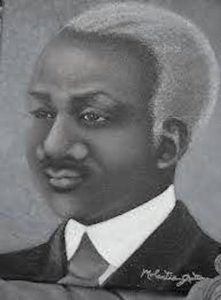Black History in 19th Century Hawaiʻi
By guest contributor Deloris Guttman, founder and curator of the Obama Hawaiian Africana Museum (formerly known as the African American Diversity Cultural Center Hawaii).
The history of the Black presence in Hawaiʻi goes back to the early sailors. Blacks were crewmembers of James Cook’s second and third Pacific voyages. Free and enslaved Blacks served onboard these ships in a variety of capacities.
Many other African Americans worked in the maritime industry during this period as crew members, pilots, cooks, stewards, stevedores, builders and captains.

The National Park Service Underground Railroad Network for Freedom dedicated wayside interpretive signage that tracks the life of Anthony D. Allen, a slave from Schenectady, New York to freedom in Hawai‘i in 1810. Washington Middle School in Honolulu is recognized as the Anthony D. Allen Site and home to the signage sharing Allen’s extraordinary story.
Anthony D. Allen (1774-1835) was a slave who sought and gained his freedom at age 24. From enslavement in Schenectady, New York, he made his way by land to Hartford, and by sea to Boston where he shipped out on a commercial ship that began his travels around the world. He was hired as a steward for seven years and cook for one year under the same captain. Faced with recapture in 1806, he bought his freedom with help from the ship’s owner who let him pay back the money demanded over time. After many adventures and traveling the world, Allen left the sea to make the Hawaiian Islands his home in 1810 because men of African descent could reside there without harassment or enslavement. Allen married a Hawaiian woman and had three children who survived to adulthood. Called Alani by Native Hawaiians, Allen served as a steward and confidante to Hawaiian King Kamehameha the Great. The High Priest Hewahewa invited him to live in his home. In 1811 Hewahewa gave Allen six acres near Waikīkī* where he would establish a home and business, catering to the local royalty, chiefs, and visiting ships’ crews.
Allen’s many unacknowledged contributions include building the first carriage road up Mānoa Valley, building a school, starting the first bowling alley and running the first hospital for American seamen in Honolulu.**
*Waikīkī was once a vast marshland whose boundaries encompassed more than 2,000-acres (as compared to its present 500-acres below the Ala Wai Canal we call Waikīkī, today).
Sources
**National Park Service: A Place of Freedom: Black History in 19th Century Hawaiʻi
NPS National Underground Railroad Network to Freedom Brochure


